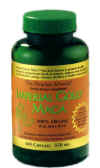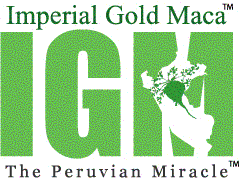
|
|
| Subjects Represent How Imperial Gold Maca™ May Influence The Body When Used As Directed. |
HOME
Order Maca
Hot Maca Deals
What Is
Maca?
Maca Cultivation
Royal Oil of Oregano
Free Samples
Royal Energized Iodine
Gelatinized Maca
Gelatinized Maca Trials
Women's Health
What Is Estrogen Imbalance
Maca Nutrition Chart
Maca Testimonials
What is Andropause
Fibromyalgia Links
What Is
Fibromyalgia
Men's Health
Books About Maca
Androgens
Super Male with
Horny Goat Weed
Testosterone
Erectile Dysfunction
Mood Swings
Infertility
|
|
Hot
Flashes
Depression
Impotence
Estrogen
Health &
Aging
The Passion Plant
Male
Menopause
Perimenopause
Progesterone
Aging and
Sexuality
Natural HRT
Important
Links
Maca
Research
Maca
Wholesale
Nutritional Value
Maca For Health
Practitioners
Health Professional Reseller
Osteoporosis
What To Expect
Contact Us
Your Feedback
Be Our
Distributor
Return Policy
On
Line Security
HealthWell.com
|
Maca's Nutritional
Value
1) A large number of essential amino acids, such as aspartic acid, glutamic acid, serine, glycine, arginine, valine and lysine 2) Fatty acids: palmatic acids, linoleic acid and saturated fatty acids; 3) Minerals (mg/100g), Fe 16.6, Mn 0.8, Cu 5.9, Zn 3.8, Na 18.7, K 2,050 and Ca 150, and 4) Vitamins, Thyamine (B1), 1) 4 alkaloids named macaina 1, 2, 3 and 4 have been detected, which stimulate the reproductive system of both sexes (Chacón, 1962; Garró, León, and Julca, 1993); it is considered that the alkaloids in Maca activate the calcitonine hormone that regulates calcium and phosphorus metabolism and activates the parathonnone involved with same metabolism; 2) The high presence of the amino-acids lysine and arginine in Maca has an effect on the regulation of female and male fertility respectively; arginine constitutes 80% of male reproductive cells, thus, Maca could solve problems related to deficiency of these amino acids, leading to lack of sexual desire and originating certain types of male and female infertility; 3) Among its components are certain sterols, (Espinoza and Poma, 1995): Brassycosterol, Ergosterol, Carnpesterol, Ergostadienol, and specially Sitosterol Correction of menopause problems and an increase in female fertility are attributed to Maca sterols and lysine; 4) Glucosinolates have been found, specially benzyl isotiocyanate this author finds that worldwide, plants with glucosinolates, like Maca, are consumed because of their action on reproductive hormonal processes. 5) Fructose, a monosaccharide sugar with 173.3 degree of sweetness,
superior to glucose, is present; fructose is recommended for combating athletes' fatigue;
fructose is a sugar utilized by seminal plasma to give energy to spermatozoids. 1) Increase in female fertility and the production of seminal fluid in males; 2) Animals fed with Maca had the same weight as those fed on other products, but, those fed with Maca were more active and energetic, that is to say, Maca is a great source of energy without fattening; 3) Young born from female fed on Maca had higher birth weight; 4) It controls rickets and osteo malacia in children and adults; 5) It revitalizes physical and intellectual capabilities, 6) It is effective against premature aging and organic feebleness with the loss of energy, and 7) It controls different kinds of anemia. SEE MACA COMPOSITION MACA CULTIVATION Bibliography
Read The Book That Explains It All
Copyright © 2000-2018 ImperialGoldMaca.com. All Rights Reserved. Privacy Statement | Safe Shopping | Terms Of Use | Copyrighted Material |








